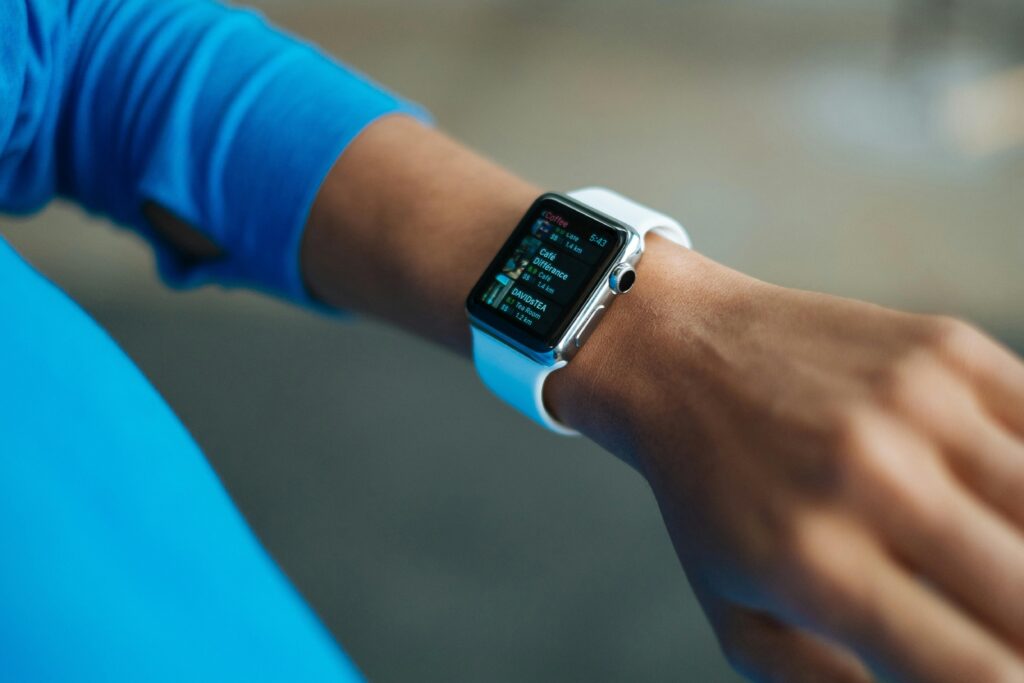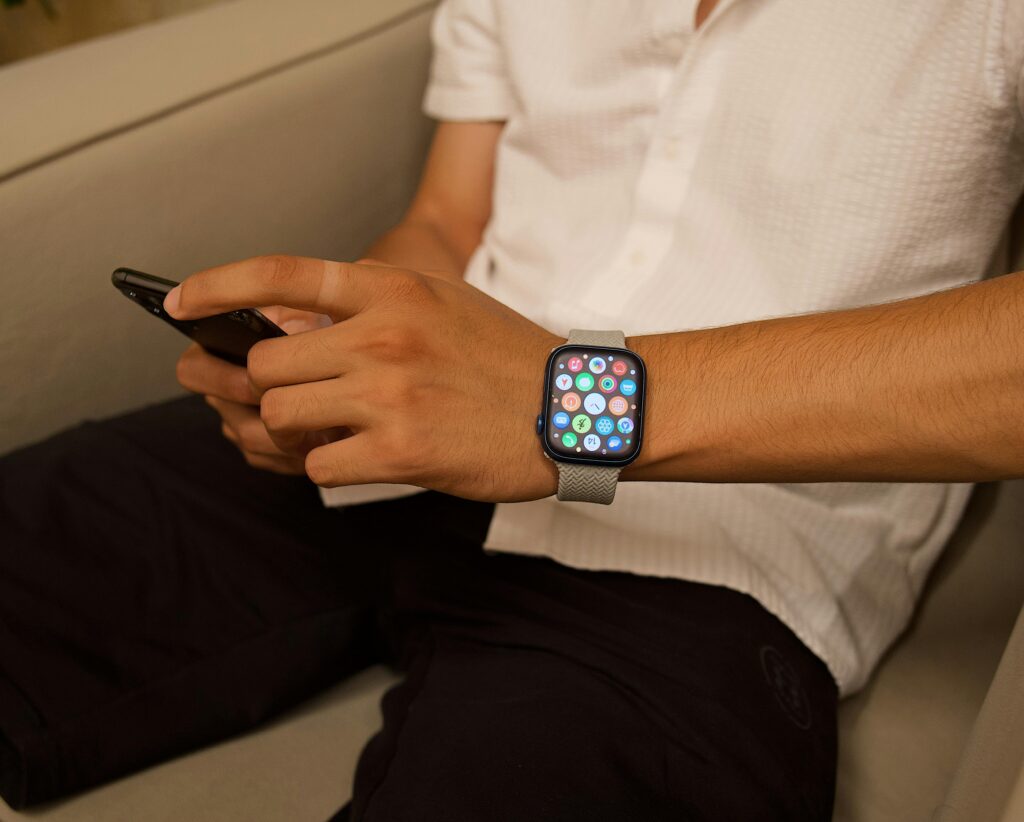In today’s fast-paced world, managing your health and fitness goals has never been easier, especially with the advent of advanced fitness trackers like the Apple Watch. MyFitnessPal, one of the leading fitness apps, allows users to track their food intake, calories, and exercise routines. But does it sync well with the Apple Watch? How can you integrate both seamlessly to get the most out of your fitness journey?
In this article, we will explore how MyFitnessPal syncs with the Apple Watch, the steps to ensure they work together smoothly, the types of data that sync, and what you can do with this integration. This guide will provide all the details you need to make the most of MyFitnessPal on your Apple Watch.

What Data Syncs Between MyFitnessPal and Apple Watch?
The integration between MyFitnessPal and Apple Watch offers a seamless experience that allows data to flow freely between the two devices. This powerful combination lets you track important health metrics, set and adjust fitness goals, and monitor your progress more effectively. By syncing your Apple Watch with MyFitnessPal, you can easily access real-time health data on both devices, creating a more connected and efficient fitness tracking system.
Below is an expanded breakdown of the key data that syncs between MyFitnessPal and your Apple Watch.
1. Steps
One of the most useful features of syncing MyFitnessPal with your Apple Watch is the automatic tracking of steps. The Apple Watch comes equipped with sensors that count your steps throughout the day, providing valuable insight into your physical activity levels. This data is automatically synced with MyFitnessPal, where it can be used to adjust your daily calorie goal.
When you walk more, your calorie expenditure increases. MyFitnessPal takes that step count and adjusts your calorie goal for the day accordingly. Essentially, the more steps you take, the more calories you can consume, which helps to keep you on track with your fitness goals.
How to Enable Step Tracking:
- Open the MyFitnessPal app on your iPhone.
- Go to the “More” tab at the bottom of the screen.
- Select “Steps.”
- Choose “Apple Watch” as your source for step data.
By doing this, you ensure that MyFitnessPal pulls step data directly from your Apple Watch and uses it to adjust your daily calorie goal in real time. This feature helps you keep a balanced approach to eating and exercise.
2. Active Calories (Limited Syncing)
Active calories are the calories burned during physical activities like exercise, walking, and running. The Apple Watch tracks active calories through its built-in sensors and provides detailed information on how many calories you have burned during specific activities. However, it is important to note that MyFitnessPal currently does not sync active calorie data from the Apple Watch directly.
While the Apple Watch is great at tracking your active calories, MyFitnessPal only syncs step data and certain types of exercise that are recorded through the Apple Health app. This means that if you’re relying on MyFitnessPal to adjust your calorie intake based on active calories, there might be discrepancies between the calorie count shown on your Apple Watch and what is reflected in MyFitnessPal.
If tracking active calories is important to you, manually log your workouts in MyFitnessPal. This can be particularly helpful if you engage in high-intensity exercises like running, cycling, or weight training, where calorie burn is significantly higher.
By manually entering your workout details into MyFitnessPal, you ensure that your active calories are accurately reflected in your daily calorie goal, even if the Apple Watch isn’t syncing them automatically.
3. Workouts
The Apple Watch is designed to track a wide range of workouts, from running and cycling to swimming and yoga. When you complete a workout on your Apple Watch, the data is sent to the Apple Health app. From there, it syncs to MyFitnessPal, making it easier for you to track your exercise routine and monitor your fitness progress.
Supported Workouts:
The Apple Watch is equipped to track a variety of physical activities, including but not limited to:
- Running (indoor and outdoor)
- Swimming
- Cycling
- Yoga
- Weight Training
- CrossFit
- HIIT (High-Intensity Interval Training)
- Walking
- Rowing
Once you finish a workout on your Apple Watch, the data is transferred to Apple Health and from there synced with MyFitnessPal as an “Apple Health Exercise.” This data includes important information such as:
- Workout duration
- Calories burned
- Exercise type
- Intensity level
This seamless integration ensures that MyFitnessPal accurately reflects your exercise efforts and helps you track the progress of your fitness goals.
4. Nutrient Breakdown and Water Intake
MyFitnessPal doesn’t just track your steps and exercise – it also helps you keep track of your nutrition and hydration. With the Apple Watch, you can easily view your nutrient breakdown, including the remaining calories, macros (carbs, protein, and fat), and other important nutrients directly from your wrist. This helps you stay on top of your diet while working toward your health goals.
You can add complications to your Apple Watch face that show your daily calorie intake, remaining macros, and other important data. These complications make it easy to get a snapshot of your daily progress without opening the MyFitnessPal app on your iPhone.
Additionally, MyFitnessPal allows you to track your water intake on the Apple Watch. Staying hydrated is key to maintaining good health, and MyFitnessPal’s “Add Water” feature lets you log your water intake directly from the watch.
How to Log Water Intake:
- Open the MyFitnessPal app on your Apple Watch.
- Use the “Add Water” feature to log your water intake for the day.
This feature is particularly helpful for people who are focused on maintaining hydration levels while balancing nutrition. You can track your hydration on the go, without the need to pull out your phone.

What Can You Do With MyFitnessPal on Apple Watch?
Once MyFitnessPal is synced with your Apple Watch, you’ll unlock several features that help you efficiently manage your health goals. Here’s how you can make the most of MyFitnessPal on your Apple Watch:
- View Daily Nutrients: You can easily check your daily intake of calories, carbs, fat, and protein directly on your Apple Watch. This feature is especially helpful if you’re following a strict diet plan or need to stay on top of your macronutrient goals throughout the day.
- Track Your Steps: The Apple Watch automatically tracks your daily steps, and this data is synced with MyFitnessPal to help you stay on track with your fitness goals. The more steps you take, the more calories you burn, which helps you adjust your food intake accordingly.
- Add Calories Quickly: If you’ve had a meal and want to log your calories quickly, you can use the “Quick Add” feature on your Apple Watch to enter the calories without opening your phone. This saves you time and ensures that your food diary stays updated.
- View Remaining Calories and Nutrients: MyFitnessPal lets you see how many calories you have left for the day, along with the remaining values for macros and micronutrients, all from your wrist. This feature is part of the app’s complications, which can be added to your watch face for easy access.
- Add Water: Staying hydrated is essential for overall health. MyFitnessPal lets you log your water intake directly from the Apple Watch, making it simple to track your hydration levels without having to open the app on your phone.
How to Sync MyFitnessPal with Apple Watch
Syncing MyFitnessPal with your Apple Watch is relatively easy and can be done through the MyFitnessPal app on your iPhone. To get started, you need to ensure that both devices are connected to your iPhone and that all necessary permissions are enabled for syncing.
Step-by-Step Guide to Syncing MyFitnessPal with Apple Watch:
- Install MyFitnessPal on Your iPhone: First, download and install the MyFitnessPal app on your iPhone from the App Store.
- Enable Automatic App Installation: If you have the “Automatic App Install” option turned on in the Apple Watch app on your iPhone, MyFitnessPal will automatically install on your Apple Watch when you install it on your iPhone. If this feature is disabled, follow the steps below:
- Open the Apple Watch app on your iPhone.
- Go to the “My Watch” tab.
- Scroll down to the available apps section.
- Tap “Install” next to MyFitnessPal.
- Sync with Apple Health: To ensure that MyFitnessPal syncs with your Apple Watch, you must link it to the Apple Health app. Here’s how to do it:
- Open MyFitnessPal on your iPhone.
- Go to the “More” tab and select “Apps & Devices.”
- Find and select “Health App.”
- Allow MyFitnessPal access to your Health data by tapping “Turn On All” and then “Allow” at the top right.
Once this is done, your Apple Watch and MyFitnessPal will begin syncing automatically. From this point on, your Apple Watch will be able to send data, such as steps and workouts, to MyFitnessPal and vice versa.

Troubleshooting: Why Doesn’t My Apple Watch Sync with MyFitnessPal?
Although syncing between MyFitnessPal and the Apple Watch is generally seamless, users may sometimes experience syncing issues. Here are some common problems and troubleshooting tips to help resolve them.
Step Count Doesn’t Sync
If your step count isn’t syncing between your Apple Watch and MyFitnessPal, the first thing to check is whether the Apple Watch is selected as your step source within the MyFitnessPal app. To do this, go to the “More” tab in the iPhone app, select “Steps,” and ensure that “Apple Watch” is set as the source.
Additionally, you can check the sync status in the “More” tab of the iPhone app. If necessary, tap “Sync” to manually trigger the sync process and get your step data updated in MyFitnessPal.
Workout Data Missing
If you’re not seeing your workout data in MyFitnessPal, ensure that Apple Health is properly linked to the app. This allows workout data from your Apple Watch to sync to MyFitnessPal. If the workout data is still missing, try manually logging the exercise in MyFitnessPal. Alternatively, disconnect and reconnect the Apple Health integration in the MyFitnessPal settings to force a fresh sync.
Calories Not Updating Correctly
MyFitnessPal currently doesn’t sync active calories (calories burned during exercise) from the Apple Watch, which can cause discrepancies in the calorie burn information between the two devices. If this is happening, you can manually adjust your calorie intake to account for the additional calories burned from exercise.
App Not Responding
If MyFitnessPal isn’t responding or syncing data properly, try closing and reopening the app on both your Apple Watch and iPhone. This simple step can often resolve minor glitches and restore proper functionality.
By following these troubleshooting tips, you should be able to resolve common syncing issues and ensure your MyFitnessPal and Apple Watch are working together seamlessly to track your fitness progress.

ReciMe: A Recipe Organizer and Nutritional Tracker Alternative
If you’re looking for an alternative to MyFitnessPal that focuses more on the meals you prepare rather than just general calorie tracking, ReciMe might be exactly what you need. One of the key features we offer is the ability to automatically calculate the calories, protein, carbs, and fats for the recipes you save. This means you can track your nutrition based on the actual dishes you’re cooking, without needing to log every individual ingredient. Unlike MyFitnessPal, which centers around food tracking and syncing with devices like the Apple Watch, we built ReciMe to focus on the meals you’re preparing, making nutrition tracking simpler and more personalized.
We created ReciMe to help you save and organize recipes from various platforms such as Instagram, TikTok, Pinterest, and Facebook. Once saved, you can easily organize them into cookbooks, plan your meals for the week, and generate grocery lists based on the recipes you’ve selected. This keeps everything in one place, saving you time and energy when it comes to meal planning and grocery shopping.
We designed it as a tool to manage your cooking experience and track the nutritional content of your meals. You can adjust serving sizes, convert measurements between metric and standard units, and get the exact nutritional breakdown for each recipe. It’s a great alternative if you’re more focused on recipe organization and nutrition management without needing all the extra fitness features.
ReciMe is available on iOS,iPad and as a Chrome extension, ensuring you can access your recipes and meal plans across multiple devices. If you prefer a recipe-focused solution that helps with nutrition tracking based on the meals you cook, ReciMe offers a simple, efficient alternative to MyFitnessPal, making it easier to plan your meals and stay on top of your nutrition goals.
Just try it – you’ll love it:


Conclusion
Syncing MyFitnessPal with your Apple Watch provides a convenient way to track your fitness goals, monitor your daily activity, and manage your nutritional intake. While there are some limitations, such as the inability to sync active calories and a few syncing issues that might arise, the integration between the two tools allows users to gain valuable insights into their health journey. By following the steps provided in this guide, you can make sure your devices sync smoothly, enabling a more seamless fitness tracking experience.
FAQs
1. Does MyFitnessPal sync all types of data from Apple Watch?
MyFitnessPal syncs key data from the Apple Watch, such as steps and certain workout data, through Apple Health. However, it does not sync active calories, which can lead to discrepancies in calorie burn between the devices.
2. Can ReciMe sync with my Apple Watch?
Currently, ReciMe does not support syncing with Apple Watches. However, the app is available on iOS, iPad, and Chrome, allowing users to access recipes, meal plans, and nutritional information across multiple devices.
3. How do I sync my Apple Watch with MyFitnessPal?
To sync MyFitnessPal with your Apple Watch, you need to install MyFitnessPal on your iPhone, enable the sync with Apple Health, and ensure the correct permissions are granted. After that, your Apple Watch and MyFitnessPal will sync automatically.
4. What workouts are tracked by MyFitnessPal through Apple Watch?
The Apple Watch tracks a variety of workouts, including running, cycling, swimming, yoga, weight training, and more. Once you finish a workout, the data is transferred to Apple Health and then synced with MyFitnessPal as an “Apple Health Exercise.”
5. Why doesn’t my workout data show up in MyFitnessPal?
Ensure that Apple Health is linked correctly to MyFitnessPal. If your workout data is still missing, manually log the workout in MyFitnessPal or try disconnecting and reconnecting Apple Health to force a fresh sync.
6. How can I track water intake with MyFitnessPal on Apple Watch?
MyFitnessPal allows you to log your water intake directly from the Apple Watch. To do this, open the MyFitnessPal app on your Apple Watch and use the “Add Water” feature to log your hydration for the day.
7. Can I view my calorie and nutrient data on Apple Watch?
Yes, MyFitnessPal offers complications for your Apple Watch that show daily calorie intake and remaining macros (carbs, protein, fat). You can add these complications to your watch face for quick, at-a-glance updates.
